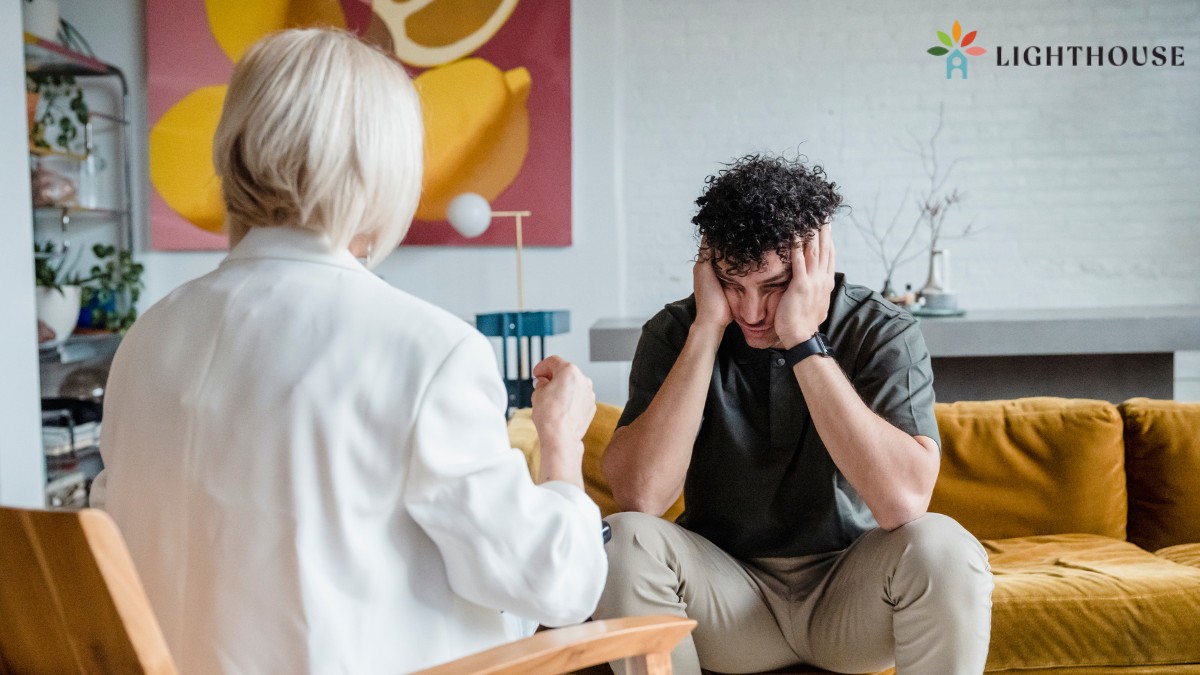Key Points:
- In-home ABA therapy in NYC offers comfort, flexibility, and stronger family involvement.
- It allows therapists to tailor treatment to the child’s real-life environment.
- Families find improved progress and consistency with therapy done in the child’s natural setting.
Autism therapy looks different today than it did a decade ago. Many parents in New York City are increasingly choosing in-home ABA therapy for their children—and for good reason. As ABA therapy providers in NYC like Lighthouse have seen firsthand, in-home models give families greater flexibility and often lead to more consistent outcomes for kids on the autism spectrum.
This article explores why in-home ABA therapy is becoming the preferred option for so many NYC families—and what benefits it offers compared to clinic-based programs.
The NYC Factor: Why Setting Matters in Autism Therapy
New York City is unique. From tight living spaces to unpredictable commutes, the daily logistics of life here add a layer of complexity for families navigating autism support. Traveling to a clinic every day may not be practical—or even possible—for many parents.
That’s why in-home ABA therapy in NYC has become more than a convenience. It’s a necessity. Children receive therapy in the comfort of their home, free from the noise, transitions, and sensory overload that often come with busy therapy centers or long travel routes.
Parents and caregivers also get a front-row seat to their child’s development, which helps them better understand and support new skills between sessions.
The Benefits of In-Home ABA Therapy for Children with Autism
In-home therapy doesn’t just remove the commute—it changes the nature of the therapy itself. When therapy happens in a child’s own environment, learning tends to be more relevant, less disruptive, and easier to generalize.
Here are some of the key reasons families are choosing in-home ABA therapy over clinic-based options:
1. Familiar Environment Supports Comfort and Learning
Children with autism often struggle with transitions and unfamiliar places. By delivering therapy at home, we eliminate this stress.
The child starts each session in a space they know, surrounded by people and items that feel safe. That comfort helps them engage more quickly and stay focused longer.
2. Therapy Is Tailored to Real-Life Challenges
In a clinic, therapists simulate life situations. At home, they work through actual ones.
Whether it’s managing mealtime routines, learning how to share toys with siblings, or safely crossing a busy NYC street, in-home ABA therapists can build behavior programs based on what’s happening in the child’s real world.
3. Parent Involvement Becomes Easier and More Natural
When ABA therapy happens at home, parents aren’t just observers—they become active participants.
Therapists can coach caregivers in real time, modeling techniques, offering feedback, and showing how to handle challenging behaviors on the spot. That real-time collaboration often leads to more consistent reinforcement of goals throughout the day.
4. Flexible Scheduling That Fits Family Life
Life in NYC doesn’t follow a neat 9-to-5 schedule, and clinic-based therapy often does. In-home ABA services offer more flexibility.
Sessions can be planned around naps, school hours, doctor’s appointments, and other family needs. That flexibility means fewer missed sessions and better consistency—both of which are crucial for progress.
5. Reduced Overstimulation and Fewer Disruptions
Clinic environments can be busy, loud, and filled with unfamiliar faces. While some children thrive there, others become overwhelmed or distracted.
In-home therapy gives kids a calmer starting point. Sessions are more focused, and therapists can better control the pace and environment, adjusting lighting, sounds, or activity levels as needed.
What In-Home ABA Therapy Can Address
The scope of in-home ABA therapy is just as broad—and often even more effective—than clinic-based programs when delivered by qualified professionals. Here’s what it can help with:
- Daily routines: Dressing, brushing teeth, organizing school materials.
- Behavior management: Tantrums, aggression, or non-compliance during transitions.
- Communication: Building functional language or using alternative communication systems like PECS or AAC.
- Social skills: Sharing, taking turns, or asking for help appropriately—especially in sibling or neighborhood interactions.
- Safety skills: Learning rules for crossing streets, avoiding dangerous objects, or staying with a caregiver in public.
When these skills are practiced where they naturally occur, they’re more likely to stick.
How Parents Can Know if In-Home ABA Is the Right Fit
Choosing between in-home and clinic-based ABA therapy can feel overwhelming, especially in a city like New York. To help, here are a few questions families should consider:
1. What are your child’s sensory and behavioral needs?
If your child becomes dysregulated in new environments, struggles with transitions, or benefits from fewer distractions, in-home ABA may help them stay more engaged.
2. How involved do you want to be in therapy sessions?
In-home ABA makes it easier for parents to observe, ask questions, and take part in sessions without having to rearrange their entire day.
3. Do you want therapy to focus on home-based goals?
If your biggest concerns happen at home—like bedtime struggles or difficulties with chores—those issues are often better addressed where they occur.
4. What is your family’s daily routine like?
If transportation is a barrier, or if your schedule fluctuates, in-home therapy allows for more tailored session times and fewer disruptions.
What to Expect From In-Home ABA Therapy
We understand that opening your home to a therapist can feel like a big step. That’s why at Lighthouse, we make the process clear and collaborative from the start.
Here’s what you can expect:
- Initial assessment: We conduct a comprehensive evaluation to understand your child’s needs and your family’s goals.
- Treatment planning: Our team creates a customized therapy plan designed to teach socially significant skills.
- Ongoing collaboration: Parents are kept in the loop and encouraged to actively participate.
- Regular progress updates: We track data, measure outcomes, and adjust strategies based on how your child responds.
Our team is trained not just in behavior analysis—but in communication, empathy, and building strong partnerships with families.
Common Misconceptions About In-Home ABA Therapy
There are some myths that might make parents hesitant about in-home care. Let’s address a few of the big ones:
- “It’s less structured than a clinic.”
In reality, in-home ABA therapy follows a highly structured plan—it just happens in a setting that feels more natural. - “It’s only for mild cases.”
In-home services can benefit a wide range of learners, from early intervention to teens with complex behavioral needs. - “I’ll need to supervise the whole time.”
You’re welcome to observe or participate, but you won’t be expected to lead or manage the sessions yourself.
Why NYC Families Are Turning to Lighthouse
At Lighthouse, we know what it’s like to juggle a million moving parts in a city that never slows down. That’s why we bring high-quality ABA therapy in NYC straight to you—where it fits your life and your child’s needs best.
We’ve seen the transformation that happens when kids receive therapy in an environment that supports—not challenges—their development. From daily routines to long-term goals, we’re here to walk alongside you.
Get in touch today to learn how our in-home ABA therapy programs in NYC can support your child’s growth in the comfort of your own space. Our team is ready to guide you through the process, answer your questions, and create a plan that’s built around your family. Let’s start the journey together.




